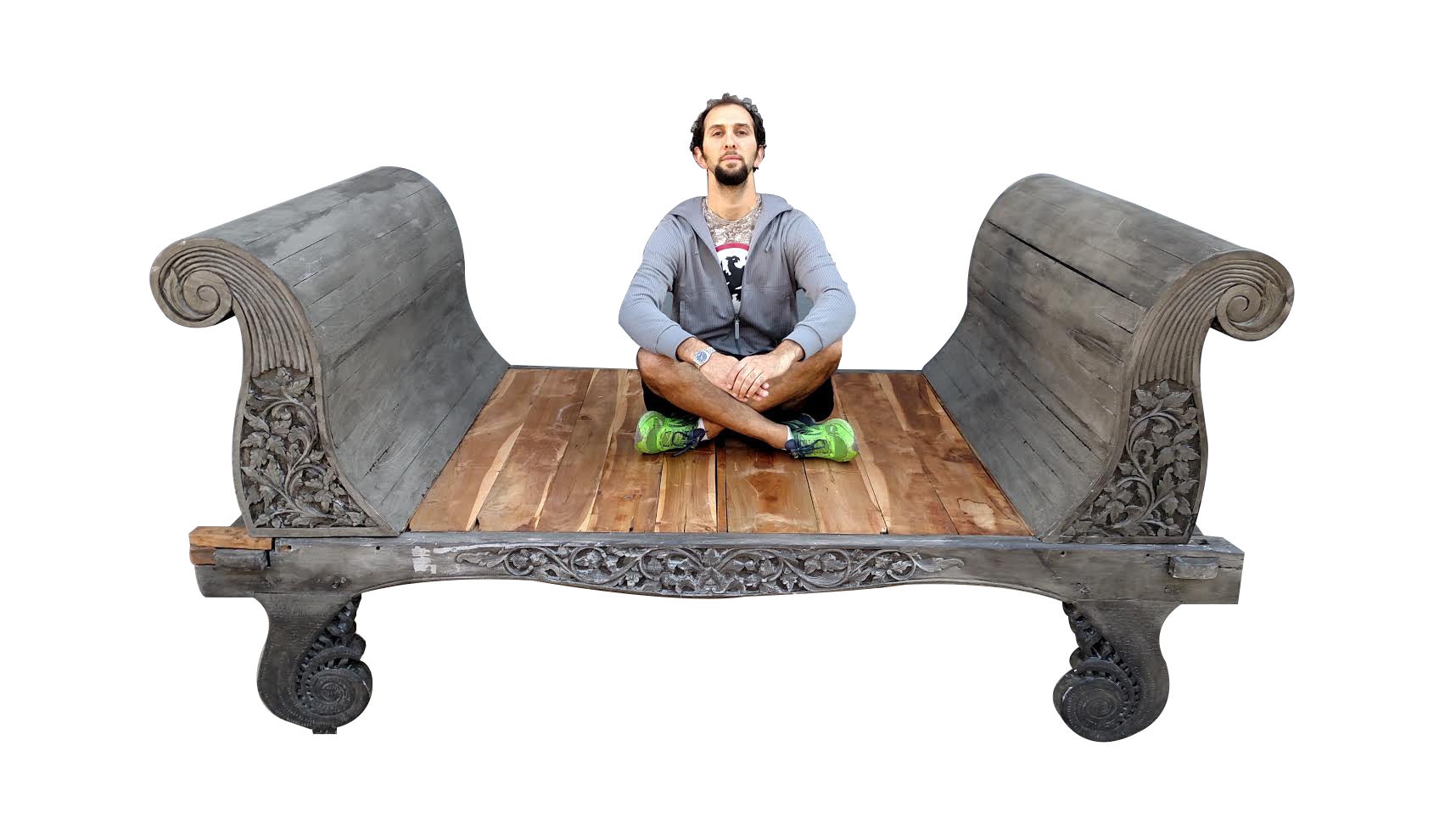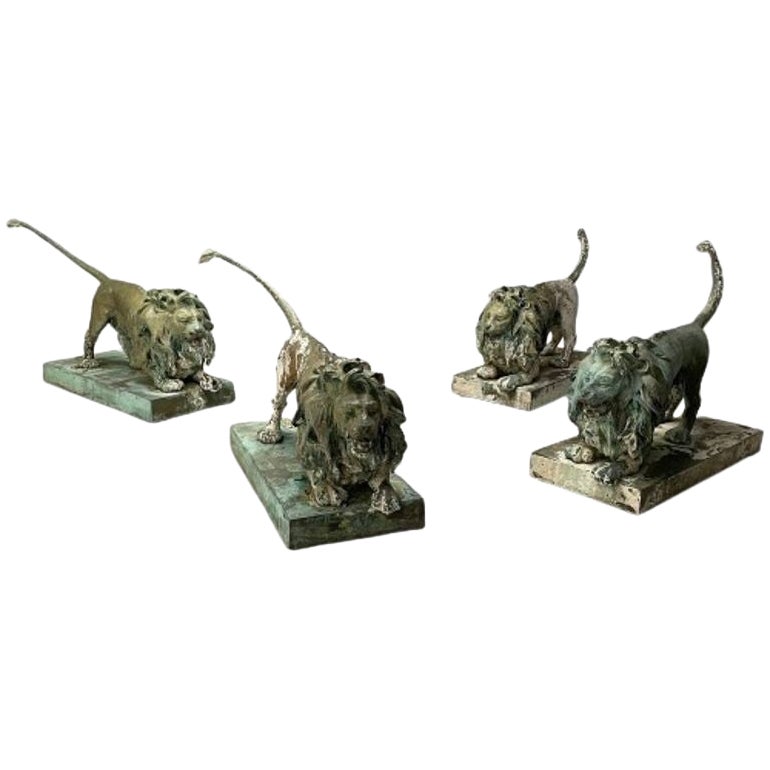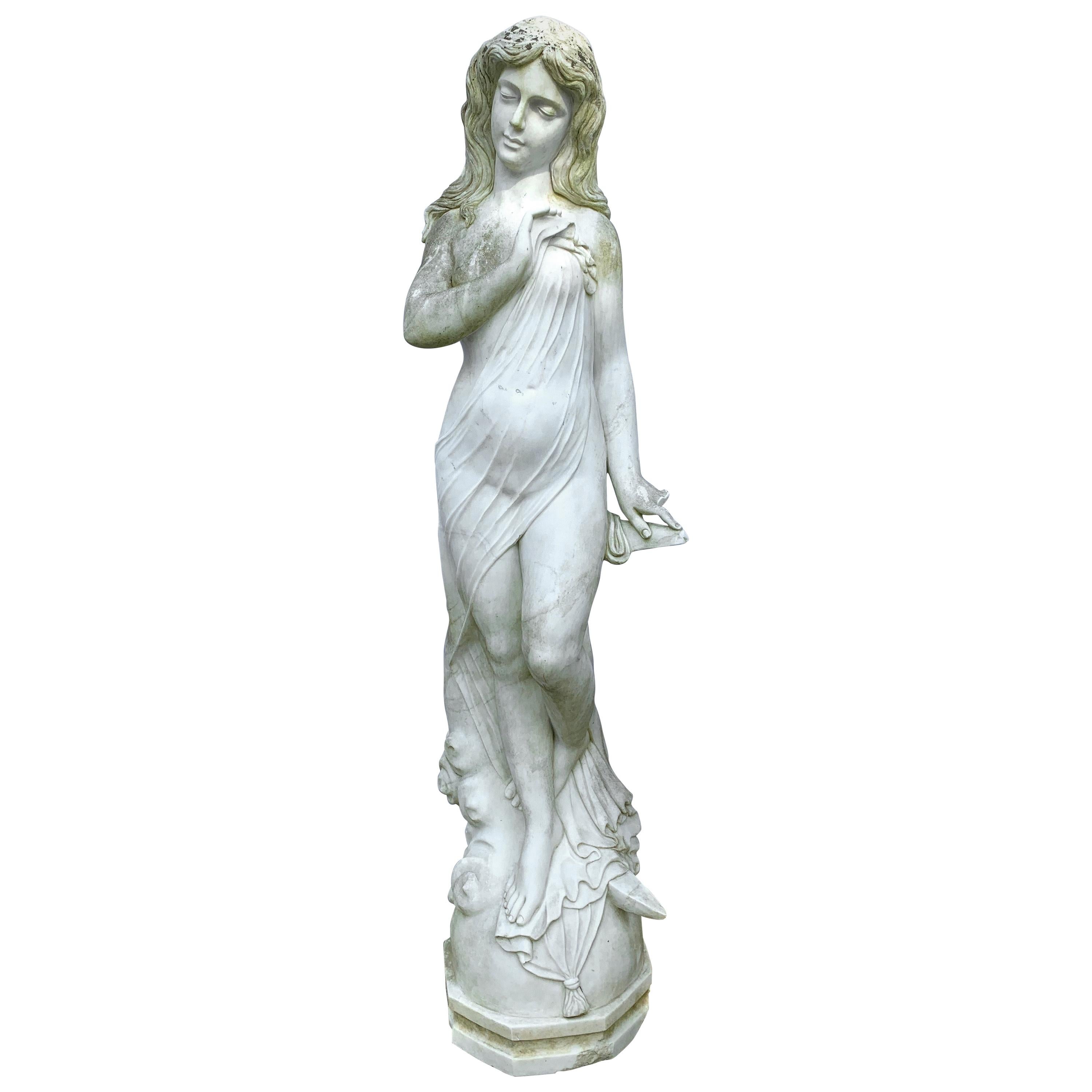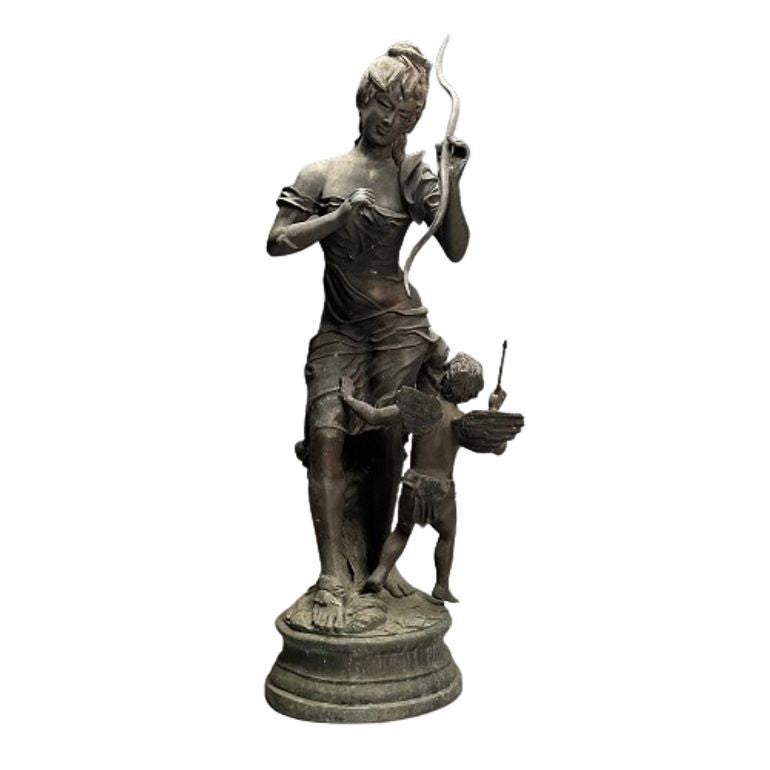Items Similar to Monumental Max Turner Patinated Bronze Life Size Otter Fountain Statue Sculpture
Want more images or videos?
Request additional images or videos from the seller
1 of 13
Monumental Max Turner Patinated Bronze Life Size Otter Fountain Statue Sculpture
About the Item
A very large and impressive Max Turner fountain statue. Made out of bronze featuring a trio of guardian Otters. Circa 1997. The otter symbolizes friendship, peace, kindness and family. The otter is also social and mischievous and a symbol of grace, empathy, happiness and never-ending curiosity.
Max Turner was born July 28, 1925 in Omaha, Nebraska and raised near Bingham Canyon, Utah. Growing up in a small mining town, Turner’s only insight into cosmopolitan culture was through discarded magazines, but reading things like Cosmo, Good Housekeeping and Red Book served as Turner’s first artistic inspiration.
Turner knew that he wanted to see the world, and he was able to travel when he joined the U.S. Navy. Eventually, Turner settled in Los Angeles and his love of art and sculpture was able to thrive. Turned owned and operated a silkscreen printing company for 32 years, and later opened his own bronze foundry where he created high-quality bronze sculptures across a spectrum of genres.
About Max Lamar Turner (1925 – )
Painter, Sculptor, Teacher and Author.
Max Turner was born in Omaha, Nebraska on July 28, 1925. His father was Lance Howard Turner and his mother Mary Irene Turner. In 1927, his family moved to Bingham Canyon, Utah where Max’s father extracted copper from a creek that he had diverted to pass through his garage. The town was located in a narrow canyon on the eastern face of the Oquirrh Mountains. In 1938, when Max was 13, his family moved to Midvale, Utah. After completing high school, Max went to work laying rail until he was inducted into the U.S. Navy to serve during W.W. II. There he took an aptitude test and was initially assigned to the medical corp., later transferring to the dental unit. Max was stationed at Port Hueneme, Ventura County, California through the end of the war. When he was discharged in 1946, he remained in Southern California, living in the Los Angeles area. He met a man named Larry Torres and they formed a partnership to do silk screen work primarily for the Colby Poster Printing Company. This lasted about 10 years until the Colby building caught fire and burned down. In 1958, Max began working for Slade Novelty company that made doll parts using a product called plastisol. A year later, Max began producing plastic parts through his own business. One day, a couple of kids brought in a shrunken skull they had made and asked Max if he could reproduce it. Max said he could and he looked around for a business to work with for this task. He ultimately decided he could create his own machine shop to make molds. As a result, Max purchased a lathe, drill press, grinder and other tools to create his own machine shop and went into business making molds. He built a clientele and in 1973, he moved his machine shop to Glendale, California.
Painter, Sculptor, Teacher and Author
Max recalls the day when his interest in art took a new direction. He happened to be in a paint store to purchase some supplies when he saw a card posted on a wall that read, “Come paint with Connie Marlo”. Max had been interested in art since his youth and he was frequently impressed with paintings displayed by local artists at various community events. Consequently, he decided to go to Connie’s Saturday morning art class at a studio on North La Brea Avenue (between Sunset and Hollywood) in Los Angeles. But, as fate would have it, he immediately took a detour from this class when he found a piece of paper on the floor of the studio referencing another art class dealing with compositions, patterns, rhythms and color harmony. The instructor’s name was Hal Reed, a former art student of the Russian/American Master, Nicolai Fechin. Hal owned the building (previously the Will Foster Studio) and had founded the Art League of Los Angeles. When Max found Hal, he asked Hal if he could join his class. Hal said “No, the class was full” but he said Max could monitor the class in the back of the classroom. Max took him up on the offer and began observing the weekly class.
During the class, Hal told his students that they should practice what they were learning by going to “live model” classes. Max began attending these classes where he learned how to draw figures. After a few months, Hal and Max became good friends. Hal was so impressed with Max’s work that he offered Max the opportunity to teach at another location that Hal was opening in the San Fernando Valley. Max accepted the offer and began teaching his own art class. For Max, it was a quick jump from learning to teaching. Max then found that several of his students had to commute to his art class from the west end of the “Valley”. To better serve this group of students, Max decided to relocate to another studio in Calabasas.
Max continued teaching, and at this time he was producing very impressive portraits, both oil paintings and charcoal drawings from live models (Max never worked from photos). Max demonstrated real talent, and the style of his drawings and paintings were being compared to those of Nicolai Fechin. And, like Fechin, Max also had an interest in sculpting. One day, Max decided to design and cast a bronze owl sculpture to put in his Calabasas Fine Art Gallery. Later, someone approached Max when he was at the foundry and asked him about his success selling the owl sculpture. The individual who asked this question was convinced that there was a broader market for these sculptures and he ordered a dozen of the owl sculptures from Max. This encouraged Max to do more castings. Some of the new castings were antique sculptures he found and reproduced. As this new business grew, he decided to establish his own foundry, employing up to 15 workers. The business continued for many years, up until the late 1990’s when Max got tired of the foundry business and sold it.
Max, who was now in his 70’s, decided to move on to his next venture as an artist, dedicating himself to doing the actual sculpting of original art. He loved the creativity of sculpting and he had his sculptures cast at local foundries, ironically the same ones that used to be his competition. Max was now fully engaged in his new artistic direction and, over time, he produced a large body of work. He created very impressive sculptures, including about 100 full-size sculptures. He sold some of these to high-end clientele, the Foundry at SLS Las Vegas, and to Hollywood studios.
Even though Max now seemed to be totally in his element, he somehow also found time to continue to teach painting classes at the California Art Institute in Westlake Village in Los Angeles. At the institute, he specialized in figure work. Max continued to draw, paint and teach, but he says he stopped sculpting when he turned 90.
Max produced four books showcasing his drawings and paintings. The first is “Faces, The Drawings of Max Turner”, copyright 2000, that showcases nearly 100 of his portrait drawings. Within the “Acknowledgements” section, he lists Hal Reed and Joseph Nordmann, two former students of Nicolai Fechin.
In 2006, Max produced his second book titled “Figures and Faces”, reflecting not only portraits but also figure drawings and paintings. It is a wonderful book of Max’s work, but it is currently difficult to find. The third book is titled “Faces 2, The Paintings and Drawings of Max Turner”, copyright 2009, which includes 75 portrait paintings and drawings. In the “Preface” of this book, Max describes growing up in a small and isolated mining town during the Great Depression. He states that as a kid, he had little exposure of any culture or view of what the rest of the world was like. His neighbor was the trash collector and Max would sometimes go through his truck looking for anything of value. Among other things, he found magazines like Cosmopolitan, Good Housekeeping and Red Book, with covers that frequently showed drawings or paintings of faces. Max states that these images were the very first source of inspiration for him. He says that he began looking more carefully at people’s faces and if they had character, he would draw them. By drawing them, Max says that he was making them part of his world, his world of “Faces”.
In 2018, Max published his newest book showcasing his drawings and paintings. It is titled “Max Turner’s Figure Sketches”. This softbound book includes 76 pages and over 120 drawings and paintings. In the Introduction, Max explains “I have found that when approaching the figure, one should begin with the gesture. After having captured the essence or feeling of the pose, one can then proceed to build on it.” The figure sketches in this wonderful book reflect a Master’s work that consistently captures the “gesture”—showing the emotion, movement and expression.
Two more books are on the horizon for Max, both dealing with his passion for sculpting. His first, “The Sculpture of Max Turner” is a compilation of his commercial and noncommercial pieces throughout his career. The second, “Terra Cotta Sculpture by Max Turner” is a complete collection of figures done at the California Art Institute. These much anticipated books should be out later in 2018.
You can currently buy Max Turner’s books on eBay: LINK
Influences
Max now considers himself primarily a sculptor. But others in the art world are more than impressed with his drawings and paintings as well. His portraits are often described as having a Fechin-esque appearance, referring to the style of Nicolai Fechin. When Max observed those first art classes given by Hal Reed, it should be noted that Hal had previously been a student of the Russian/American Master Nicolai Fechin in the early to mid-1950’s. In fact, Hal was a student in the last art class that Fechin taught before he unexpectedly died in 1955. Hal was so strongly influenced by Fechin that he later produced two 30-minute art instruction videos as part his Art Video Productions wherein he specifically described Fechin techniques that he learned in Fechin’s class. The Fechin style and techniques were in play when Max later met Hal. Over the years, many of Max’s art students, art collectors, gallery owners, as well as the Director of the Monterey Museum of Art have commented on the Fechin-esque qualities of Max’s wonderful charcoal drawings and paintings. So, while Max may consider himself primarily a sculptor, his drawings and paintings are also impressive and very much sought after.
When Nicolai Fechin died in 1955, three of the nine students in his last art class became life-long friends. Max subsequently became friends with not only Hal Reed, but also with prior Fechin students Joseph Nordmann and Albert Londraville. These four professional artists all state that they were strongly influenced by this Russian/American Master and each demonstrated this influence in their art.
The Fechin influence on Max Turner’s drawings and paintings can be seen by watching the on-line video “The Art of Max Turner” and comparing the style to the art slides in the video “Nicolai Fechin: A Collection of 320 Paintings”.
Some of the other past artists that have influenced Max include Frank Brangwyn, Sergei Bongart, Mariano Fortuny, Abram Arkipov, Antonio Mancini, and sculptor Stanisav Szukalski. Among present day artists Max appreciates the work of Richard Schmid, Dan Mc Caw, Peter Liashkov, and Jeremy Lipking.
Dimensions:
55" x 61"h x 41"
- Dimensions:Height: 61 in (154.94 cm)Width: 55 in (139.7 cm)Depth: 41 in (104.14 cm)
- Materials and Techniques:
- Period:1990-1999
- Date of Manufacture:Circa 1997
- Condition:Wear consistent with age and use. Good vintage condition, wear and distressing from exposure to the elements.
- Seller Location:Dayton, OH
- Reference Number:

About the Seller
4.9
Platinum Seller
These expertly vetted sellers are 1stDibs' most experienced sellers and are rated highest by our customers.
Established in 2010
1stDibs seller since 2020
1,112 sales on 1stDibs
Typical response time: <1 hour
- ShippingRetrieving quote...Ships From: Dayton, OH
- Return PolicyA return for this item may be initiated within 2 days of delivery.
More From This SellerView All
- 2 Monumental Cast Bronze Verdigris Outdoor Lion Statues Entry Guardians Pair 44"Located in Dayton, OHTwo large and impressive entry gate lion statues. This beautiful pair of left and right facing lions are made of cast bronze featuring heavy verdigris patina. Their life like patin...Category
Early 20th Century Statues
MaterialsBronze
- Antique Salin French Neoclassical Cast Iron Garden Sculpture Statue Cherub 34"By Salin Foundry, ParisLocated in Dayton, OH19th century salin foundry French neoclassical cast iron sculpture statue, France Features two boys playing Front of plinth inscribed Salin, France Salin Foundry, Dammarie-sur-S...Category
Antique 19th Century Renaissance Figurative Sculptures
MaterialsIron
- Antique Italian Carved Stone Goose Geese Bird Garden Sculpture Statue 24"Located in Dayton, OHHeavy antique carved stone goose garden sculpture. Made in Italy circa 1930s. Dimensions: 24" x 8" x 13.5"hCategory
Vintage 1930s Statues
MaterialsMarble
- Antique Italian Carved Stone Goose Geese Bird Garden Sculpture Statue 24"Located in Dayton, OHHeavy antique carved stone goose garden sculpture. Made in Italy circa 1930s. Dimensions: 23.5" x 8" x 14.5"hCategory
Vintage 1930s Statues
MaterialsStone
- 4 Vintage Cast Iron Four Seasons Garden Statues Figures Sculptures Pedestals 90"Located in Dayton, OHMonumental set of ''Four Seasons'' outdoor garden statues. Drawing inspiration from Victorian, Greek and Roman styling. Crafted with exceptional detail. Each figure is poised on a sq...Category
20th Century Classical Greek Statues
MaterialsIron
- Antique Italian Carved Marble Stone Goose Geese Bird Garden Sculpture Statue 25"Located in Dayton, OHHeavy antique carved marble goose garden sculpture. Made in Italy circa 1930s. Dimensions: 24.5"h x 16.5" x 9"Category
Vintage 1930s Statues
MaterialsMarble
You May Also Like
- Large Pair Patinated Life Size Bronze Statues Sculpture of Regal Big Cats LionsLocated in West Hollywood, CALarge pair patinated life size bronze statues sculpture of Regal Big Cats Lions. Exceptional detailed high quality Large pair of Patinated bronze statues of...Category
Mid-20th Century French Statues
MaterialsBronze
- Lion Fountains, Lifesize Outdoor Statues, Patinated Bronze, England, 1860sLocated in Stamford, CTPair of Lifesize Bronze Lion Fountains on Pedestals, 19th Century Monumental Outdoor Statues, Priced for pair (two pairs available) Two monumental...Category
Antique Late 19th Century English Renaissance Statues
MaterialsBronze
- Monumental Bronze Eagle StatueLocated in Palm Beach Gardens, FLMonumental bronze eagle sculpture. The majestic bird lands on a tree branch after a successful hunt with prey in his right claw. The detail and finish of ...Category
1990s Unknown Statues
MaterialsBronze
- Important Monumental Life-Size Bronze Sculpture of Polo Player William BehrendsLocated in New York City, NYOne of the finest living American sculptors, William Behrends created and sculpted this spectacular over life-size bronze polo player. He created portrait work for the White House, State Capitol buildings in D.C and Tennessee, for the Houston Astrodome and has won many commissions for monuments across the US. For over a quarter of a century, nationally celebrated, William Behrends has created the iconic portraits on the Borg- Warner Trophy cup for the Indy 500 winners along with other commissions. He is a popular portraitist and has twice received the Richard portrait Prize by the National Sculpture Society in recognition of his expertise in evoking the character of his sitters in bronze, marble as well as terracotta. Mr. Behrends has sculpted life-size statues of the four great baseball legends Willie Mays, Willie McCovey, Juan Marichal and Orlando Cepeda which reside at Oracle Park, home of the San Francisco Giants (Giants/ AT&T ballpark). He also made baseball’s Tony Gwynn at Petco Park in San Diego, Buck O’Neill in the Baseball Hall of Fame, and Jackie Robinson and Pee Wee Reese in Brooklyn. He has sculpted figures of golfers Ben Hogan...Category
Late 20th Century American Modern Statues
MaterialsBronze
- Patinated Bronze Outdoor Statue, Venus and Cupid, Lifesize SculptureLocated in Stamford, CTPatinated bronze statue of Venus disarming Cupid. Venus playfully holding Cupid's bow while Cupid is mid-air looking along. Purchased at Tepper Galleries in NYC and Shipped to São...Category
Early 20th Century Louis XVI Statues
MaterialsBronze
- Neoclassical Greek Goddess Life-Size Marble Statue SculptureLocated in West Hartford, CTStunning architectural wonder, this neoclassical Greek goddess life-size sculpture is guaranteed to make quite the statement. All dimensions are below. N...Category
Early 20th Century Neoclassical Statues
MaterialsMarble
Recently Viewed
View AllMore Ways To Browse
Antique Composition Dolls
Fortuny Screen
Trash Can Small
150cm Diameter Dining Table
42 Leather Ottoman
Crystal Vanity Box
American Mahogany Card Table
French Commode Paw Feet
Rectangular Dining Table Massive
Helen Chislett
Orrefors Tulip Glass
Paolo Piva Glass Table
Japanese Inlaid Cabinet
Louis Xvi Style Walnut Bergere
Vintage Dark Brown Chest Of Drawers
Garrigue Tile Coffee Table
Hollow Collar
Oxblood Cabinet





